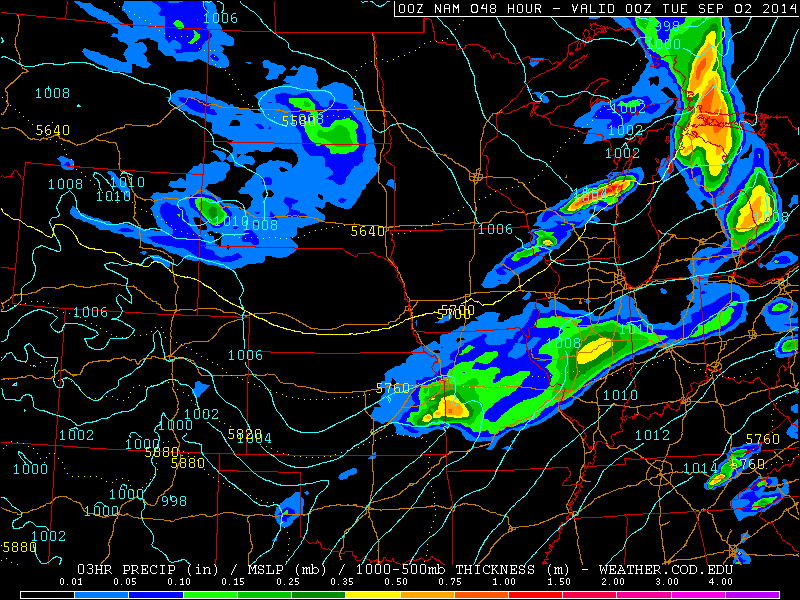Well bloggers, After looking into what this winter could bring some of you may be pleased while others not so much. after doing a lot of searching and looking through data there are a lot of signs pointing to a weak / moderate El-Nino winter. This could mean a big difference in the temperatures and amount of precipitation we see this winter in comparison to how things were last year.
So what is El-nino? Well, to make a long story short, It's basically warming of the sea surface temperatures across the central and east central pacific. This effect's our jet stream patterns which of course will effect how mild or wet our season's are, especially as we head into the approaching winter months. Take a look at these images below showing how El-Nino and La-Nina effect our jet stream patterns.
Above is a look at how an average jet stream pattern usually sets up in both the summer months (Orange line) and the winter months (Blue line). You can see that usually in the winter we would see that deep dip in the jet stream giving way to a lot of cold polar air and setting up the storm track closer to home giving way to more moisture and or snow events. This is not he case with an El-Nino. Take a look.
Above is the El-Nino pattern. You can see how the warming sea temperatures effect the jet stream. A split develops pushing that colder polar air more north giving was to a more mild winter as well as drier for much of the midwest.
With La-Nina which we have had in the past there are much colder sea temperatures! Which means less of a temperature difference between the sea temps and the air temp. Giving way for a single weaker jet stream and allowing more polar air to dip into the midwest and also pulling in more moisture giving way to more storms! But again this will not be the case this winter season.
So what will be the case? Well, take a look above. This is a map with what a typical El-Nino winter looks like. Those split flow jet streams with milder temperatures over the midwest along with less snowfall. Frigid air stays mostly north with wet weather in the south and around the west coast. Yes, not what all my snow lovers are wanting to hear, I know! I'm right there with you! A lot of people will be upset at me for saying this lol but I would love a repeat of last winter!! The 2nd snowiest winter on record for the greater Lafayette, area.
So what can we expect winter- wise this season? well, it's looking like we will experience a more mild winter. Equal days of both above and slightly below average temperatures. Below average precipitation likely.
You can see above that our average high for the month of November, is right around 50* degrees, average monthly high for December is around 35* degrees, and average monthly high for January is around 31* degrees. This is what I expect things to look like during our winter. (Close to average). Not saying we won't see a brief cold spell every now and then as that is likely. However for the most part we will see milder temps and less precipitation.
Speaking of precipitation!
Last winter we saw a total of 64.4" inches of snowfall in the Lafayette, Indiana area. On average we only see a yearly total of around 26.2" Inches! That's 38.2" inches above our average snowfall! Outstanding!! So yes! This winter following the crazy one last year will seem like a big big change!
Now if you don't like this forecast and you just know in your gut that this winter will be another outstanding winter! Then please by all means find your data and share it with us! I myself am going to put some weather folklore to the test and see if nature can out forecast science. I will always hold on to that little bit of hope that my forecast is wrong and we see an abundant amount of snow!! lol So help me out bloggers! here are a few weather folklore forecasting tools below. Take them and try them out for yourself, Please come back here or to our Facebook page and share your results with us! I'd love to see what you all find out.
Take care everyone! Thanks for taking the time to read the weather blog.
Weather Folklore, Signs Of A Cold Snowy Winter!
* Very thick onion skins or corn husks
* Woodpeckers sharing a tree
* Early arrival of crickets on the hearth
* Spiders spinning larger than usual webs
* Lots of acorns
* A small rust/orange band on a wooly worm caterpillar
* Trees are laden with green leaves late in the fall.
* Hickory nuts having heavy shells.
* Tree bark is heaviest on the north side of the tree.
* Crickets are in the chimney.
* Hoot owls call late into the fall.
* Raccoons have thick tails and bright bands
* Squirrels gathering nuts early in the year
* Pigs gathering sticks
* Frequent halos/rings around the sun or moon
- Heavy and numerous fogs in August
















